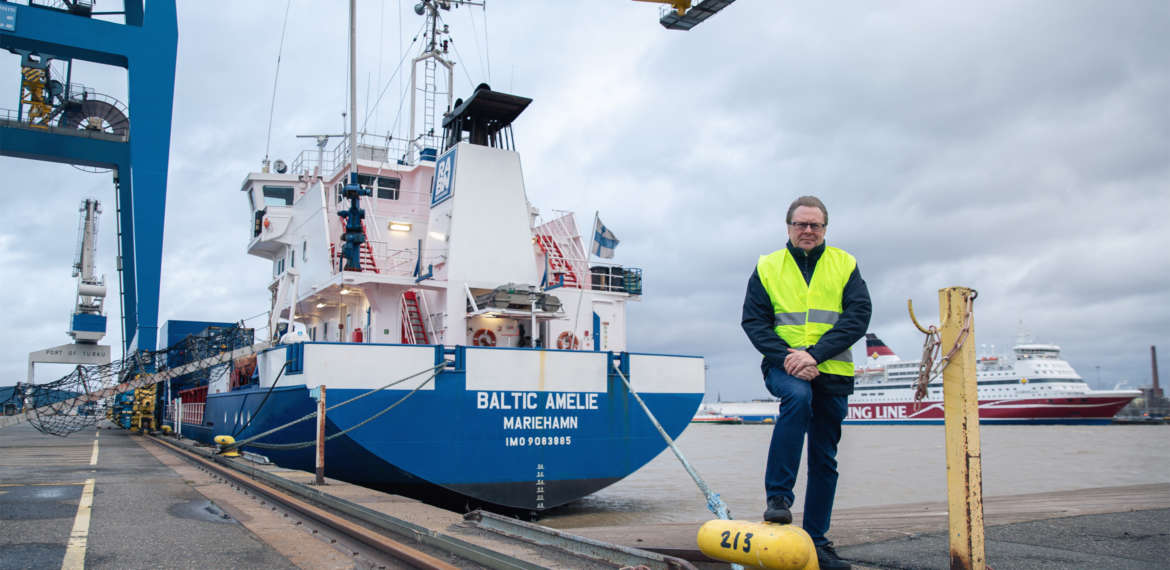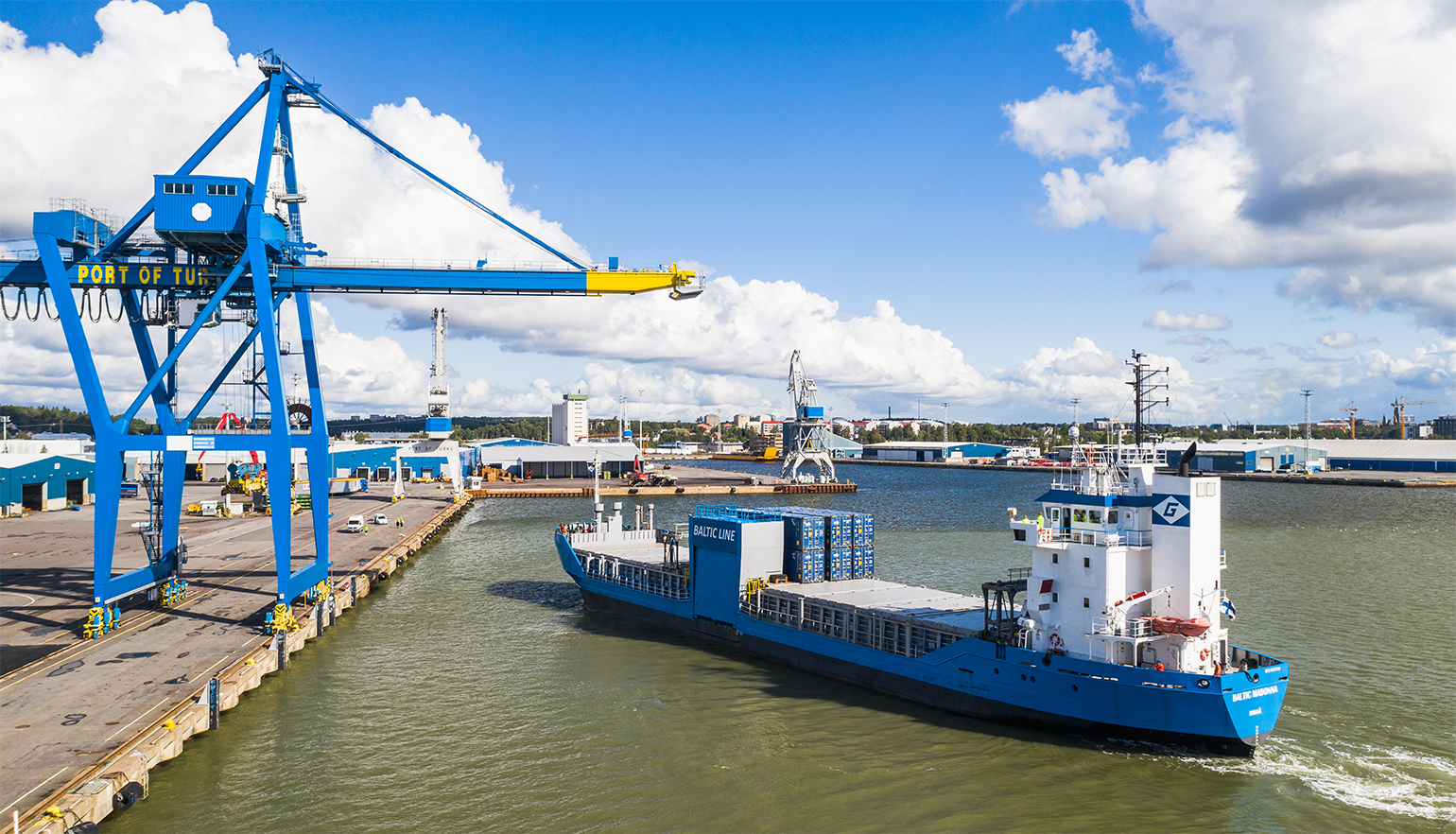Small shipping company, broad shoulders
Baltic Line operates nimbly on the Baltic Sea and the North Sea. Its ships can make exceptions to their trunk routes and call in different ports according to the customers’ needs.

It’s November, the storm Liisa is growing stronger, and the waves come close to the edge of the quay in the port. The Finnish flag at the stern of Baltic Amelíe is having a good time. It does not stop for a moment.
Mika Saarinen, Director of Sales and Business Development at Baltic Line, says that the company has decided to postpone the departure of the ship from Turku to Riga till the evening. The loading was completed already in the morning while the weather was still good. ”This time the ship is not in a hurry, so we’ll wait for some time for the wind to calm down. Amelíe could manage at sea even now, as it is used to far harder winds on the North Sea.”
Weekly in Turku
Amelíe and its big sister Baltic Madonna run the Norwegian-owned Baltic Line’s operations on the Baltic Sea and the North Sea. From Turku the ships sail westward on the trunk route Turku–Paldiski–Riga–Fredericia (Denmark)–Kristiansand (Norway)–Lyngdal (Norway)–Sandnes (Norway).
On the way eastward from Sandnes to Turku the ships call in Grenå (Denmark), Swinoujscie (Poland), and Gävle (Sweden). “In addition to these core ports, there are two to four other ports of call, depending on the needs of our customers. The shipping company is ready to call in any port in the Baltic States, Poland, Northern Germany, Denmark, and southern Sweden.”
Completing the route takes two weeks. When one ship is in Turku, the other one is in Sandnes. One of them calls in Turku every week. Amelíe can take just under 3,000 tonnes of cargo, while Madonna’s capacity is under 4,000 tonnes. The loading is done with cranes or through side ports. “In Norway the loading and unloading often takes place on short quays. In that case the side port is very convenient”, Mr Saarinen explains.
High, heavy, long and wide
This time Amelíe brought aluminium and construction plates to Turku. The cargo leaving for Riga includes steel, as well as products of mechanical forest industry and chemical industry. ”We also carry many project shipments, such as diesel engines, transformers, silos and boats. Quite a lot of mechanical engineering products. All things high, heavy, long and wide. ‘Masculine products’.”
Mr Saarinen adds that the ships also transport e.g. steel coils that are used in the manufacture of car parts. Goods exported to Norway include plywood which is used there to make kitchen cupboard doors. A high volume of materials and machines are also shipped to the land of fjords for the needs of the local offshore industry. “E.g. fish feed is imported from Denmark to Finland, but we don’t carry actual bulk cargo.”
Nimble and durable
Mr Saarinen describes Baltic Line as a small but operationally nimble company. It has broad shoulders, as the company is part of the major DSD multi-business group in Norway. “Our decision-making is fast. We are able to react very flexibly to our customers’ wishes.”
The company is also familiar with long-term projects that may last several years. “We may be involved in the planning of the customer’s logistics systems already when a factory and production are only being considered. We handle transports from door to door, including intermediate warehousing and customs clearance.”
Some time ago Baltic Line carried e.g. a power plant from Poland via Turku to Helsinki. “We advised the engineers e.g. on what size the power plant blocks should be in terms of cost-efficient transports.”

Good team spirit in the port
Mr Saarinen also mentions the environmental soundness of sea transports. ”The carbon footprint of transports have become an increasingly important criterion for the customers. It’s a good sign for the future of sea transports as well.”
He is satisfied with the co-operation with the Port of Turku. “The Port is able to provide us with all the facilities we need: quays, cranes and warehouse space.”
Mr Saarinen also thinks that the Port has great team spirit. “Different operators in the port can see that if somebody manages to open e.g. a new route, it’s a positive thing for everyone. Traffic generates more traffic.”
Text: Matti Välimäki
Photos: Ilari Välimäki
